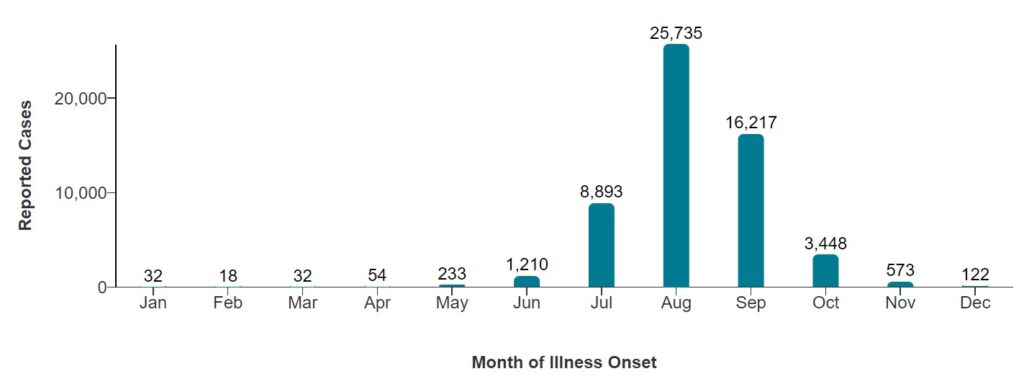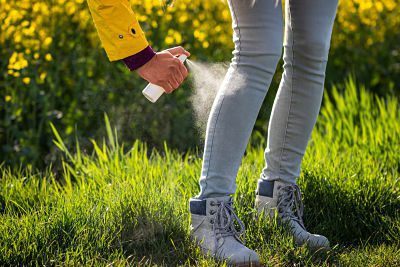Late Summer Mosquito Control: What to Expect


West Nile Virus (WNV) is one of the leading causes of mosquito-born disease within the continental United States, and one of the ones most covered in media. The disease spreads most often via infected adult mosquitoes biting and feeding upon humans.
Late summer is often when the presence of mosquito-borne diseases like WNV upticks rapidly, thanks to ideal weather conditions (regular rainfall, humidity levels, and warm air temperatures) for mosquito breeding. Data reported to the Centers of Disease Control (CDC) by state health departments each year highlights the historical trend for a late summer uptick in West Nile Virus cases (see chart):

WNV disease incidence reported to the CDC by week of illness onset, 1999-2022. Source: ArboNET, Arboviral Diseases Branch, Centers for Disease Control and Prevention.
Today, we’re covering the steps an integrated mosquito management program should take to ensure early detection and prompt communications and control, including targeted adult mosquito control measures and preventive larval interventions.
Mosquito surveillance traps, such as the ones in Clarke’s network, are used to monitor regional mosquito populations and the presence of disease. Adult mosquitoes collected in surveillance traps are routinely collected and transported back to a laboratory where they are identified by species, counted, and then tested for the presence of West Nile Virus (WNV) using a RAMP or PCR diagnostic test.
Learn more about how mosquito-borne disease surveillance testing and labs, including Clarke’s own PCR testing lab, operate here.

If mosquito samples test positive for West Nile Virus, that means there’s potential for the virus to transfer to humans through the bite of an infected mosquito.
Adult mosquito control treatments can help reduce the public health threat. If local or regional mosquitoes begin testing positive for WNV, many communities elect to schedule a preventative treatment to protect residents from the disease threat. It may also be appropriate to perform larval control in known breeding areas to prevent future transmission.
The CDC is the most credible source of information on West Nile Virus. It reports that most people infected with WNV are asymptomatic – estimated to be 8 out of 10. Most that do have some sort of symptom present, 1 out of 5 infected, develop the following:
In severe cases, about 1 in 150 of those infected, WNV can begin to affect the central nervous system, developing illnesses such as encephalitis (inflammation of the brain) or meningitis (inflammation of the membranes that surround the brain and spinal cord). Older patients are at greater risk, as well as those with certain conditions, including cancer, diabetes, hypertension, kidney disease, and organ transplants. Unfortunately, about 1 in 10 patients who develop these more severe symptoms die.
If you have these physical symptoms, the CDC recommends seeking medical treatment.

The CDC recommends these protective measures to protect against West Nile Virus transmission, and they all focus on avoiding mosquito bites when spending time outdoors.
We all appreciate being able to spend time outdoors without the nuisance of mosquito bites. But especially when mosquito-borne diseases are active in our communities, we’re reminded that mosquito control programs play a critical role in protecting public health.